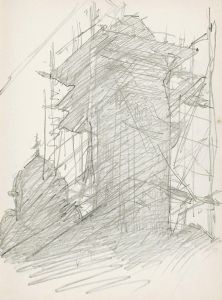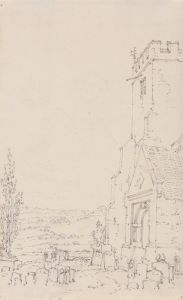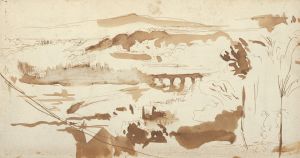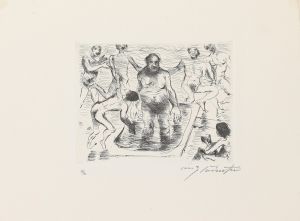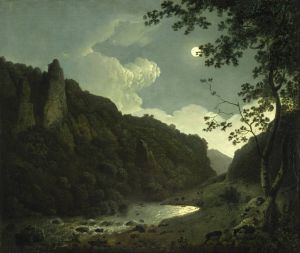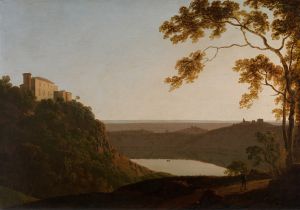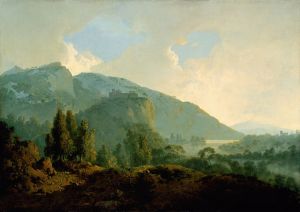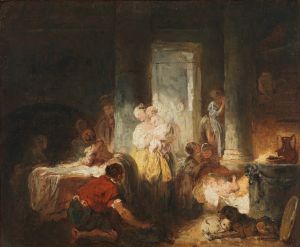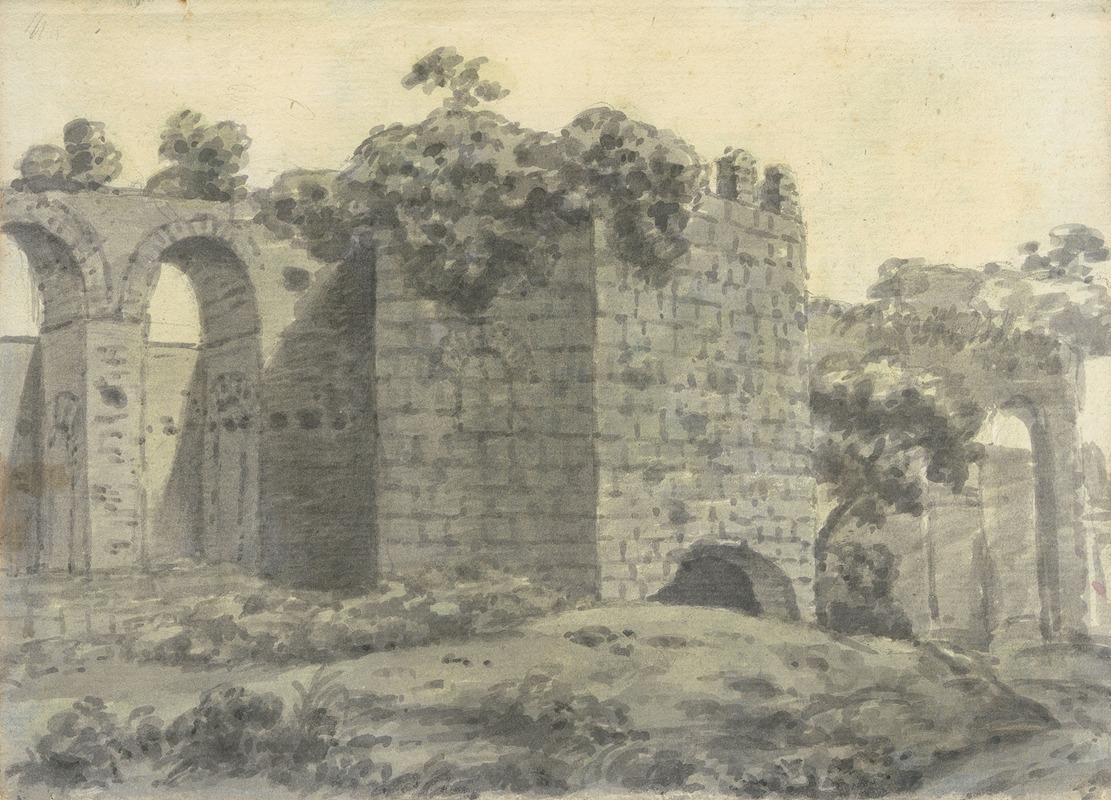
Roman Ruins Including an Arched Aqueduct and Tower
A hand-painted replica of Joseph Wright of Derby’s masterpiece Roman Ruins Including an Arched Aqueduct and Tower, meticulously crafted by professional artists to capture the true essence of the original. Each piece is created with museum-quality canvas and rare mineral pigments, carefully painted by experienced artists with delicate brushstrokes and rich, layered colors to perfectly recreate the texture of the original artwork. Unlike machine-printed reproductions, this hand-painted version brings the painting to life, infused with the artist’s emotions and skill in every stroke. Whether for personal collection or home decoration, it instantly elevates the artistic atmosphere of any space.
Joseph Wright of Derby, an 18th-century English painter renowned for his dramatic use of light and shadow, created the painting "Roman Ruins Including an Arched Aqueduct and Tower." This artwork is a part of Wright's broader oeuvre that often explored themes of science, industry, and the sublime, capturing the spirit of the Enlightenment era. Wright is particularly noted for his ability to depict the interplay of light and darkness, a technique known as chiaroscuro, which he employed to great effect in many of his works.
"Roman Ruins Including an Arched Aqueduct and Tower" exemplifies Wright's fascination with the grandeur and decay of ancient civilizations. The painting features a landscape dominated by the remnants of Roman architecture, including a prominent arched aqueduct and a tower. These structures are depicted in a state of picturesque decay, overgrown with vegetation, suggesting the passage of time and the inevitable decline of even the most powerful empires. The ruins are bathed in a soft, ethereal light, which contrasts with the darker foreground, creating a sense of depth and atmosphere.
Wright's choice of subject matter reflects the 18th-century European interest in the classical past, a period when the ruins of Rome were a popular subject for artists and travelers alike. This fascination was part of a broader cultural movement known as the Grand Tour, during which young European aristocrats traveled to Italy to study its ancient sites and artworks. Wright himself never traveled to Italy, but he was deeply influenced by the accounts and artworks of those who did, as well as by the classical revival that was sweeping through Europe at the time.
The painting is not only a testament to Wright's technical skill but also to his ability to convey a sense of awe and contemplation. The ruins serve as a reminder of the transience of human achievements and the enduring power of nature. This theme of the sublime, where beauty and decay coexist, was a central preoccupation of Romantic artists and thinkers, and Wright's work can be seen as a precursor to this movement.
In addition to its aesthetic qualities, "Roman Ruins Including an Arched Aqueduct and Tower" is significant for its historical context. The 18th century was a time of great change and discovery, with advances in science and exploration challenging traditional views of the world. Wright's paintings often reflect this spirit of inquiry and wonder, capturing the tension between the known and the unknown, the old and the new.
Today, Joseph Wright of Derby is celebrated as one of the leading figures of the British Enlightenment, and his works continue to be studied and admired for their innovative use of light and their exploration of complex themes. "Roman Ruins Including an Arched Aqueduct and Tower" remains an important example of his artistic legacy, offering viewers a glimpse into the past while inviting them to reflect on the enduring questions of human existence.





